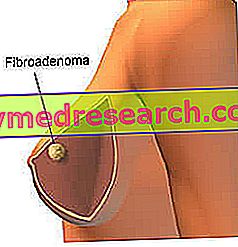Definition
The digital hippocratism (or drumstick fingers) consists in the enlargement of the distal phalanges, with progressive loss of the angle of the nail bed. The anomaly can affect one or both hands and sometimes affects a single phalanx.
Drumstick fingers can manifest with tenderness and nail alterations. At the base of this bone deformation there is a periostitis (inflammation of the connective membrane that surrounds the bones), followed by a new bone formation with proliferation of the connective tissue.
The digital hippocratism is found in numerous chronic diseases, although, in some cases, it is congenital and does not depend on any underlying problematic. The most frequently associated lung diseases are: large cell carcinoma, interstitial lung disease, chronic infections (eg bronchiectasis or lung abscesses), empyema, cystic fibrosis and mesothelioma. Drumstick fingers are usually not common in patients with chronic obstructive pulmonary disease or chronic pulmonary tuberculosis. Digital hippocratism can be associated with various cardiopathies (shunts with chronic hypoxia, endocarditis, etc.), gastrointestinal and hepatobiliary disorders (malabsorption syndromes, Crohn's disease, ulcerative colitis, primary biliary cirrhosis, liver cirrhosis, polyposis, esophageal carcinoma, etc.). Furthermore, it can be found in cases of hyperthyroidism, thymoma and thalassemia.
Possible Causes * of Drumstick Fingers
- Asbestosis
- Lung Abscess
- COPD
- Bronchiectasis
- Primary biliary cirrhosis
- Liver Cirrhosis
- Ulcerative colitis
- Infective endocarditis
- Cystic fibrosis
- Pulmonary fibrosis
- Hyperthyroidism
- Pleural mesothelioma
- myxoma
- Crohn's disease
- Intestinal polyps
- Tuberculosis
- Lung cancer
- Esophagus tumor
- Cardiac tumors



